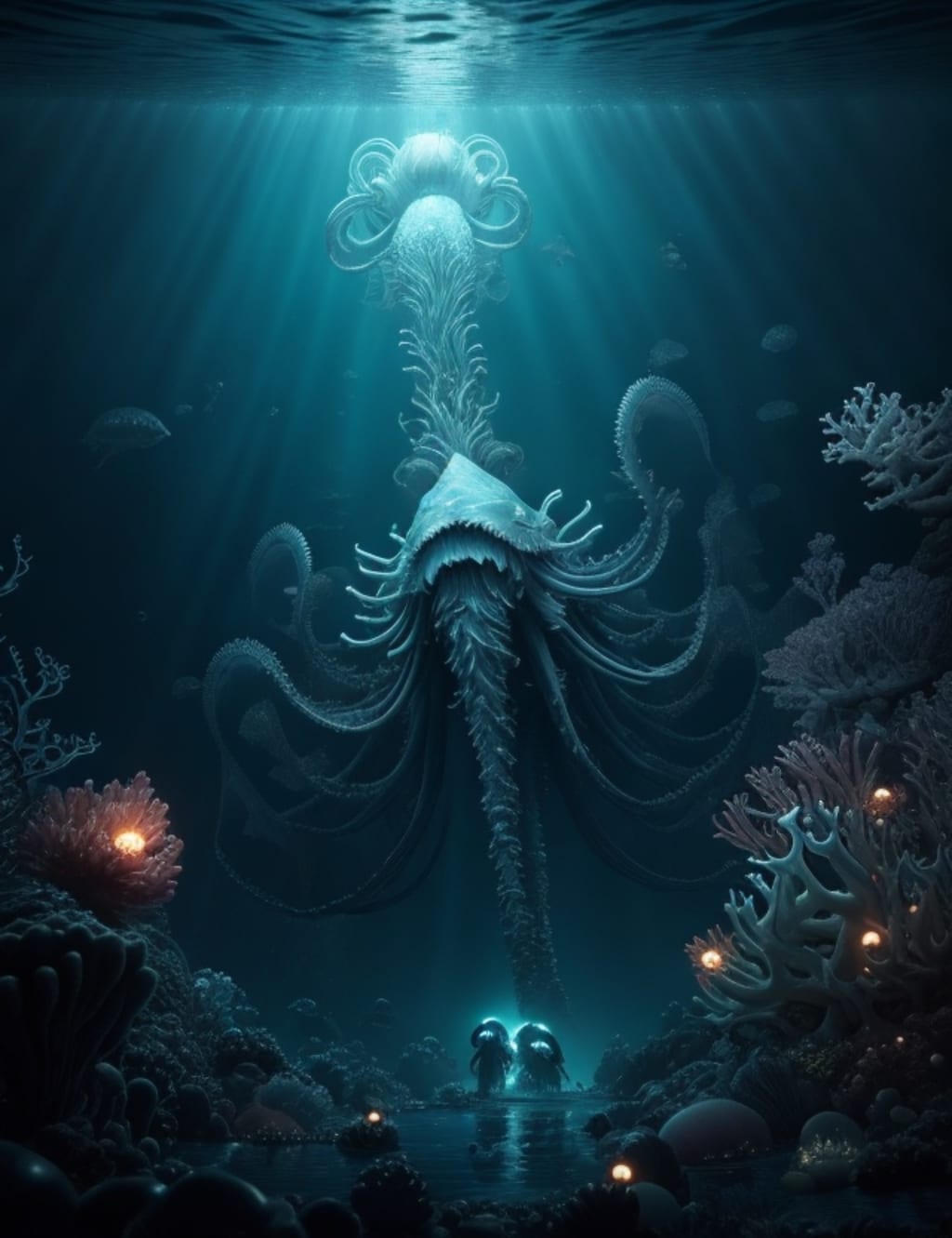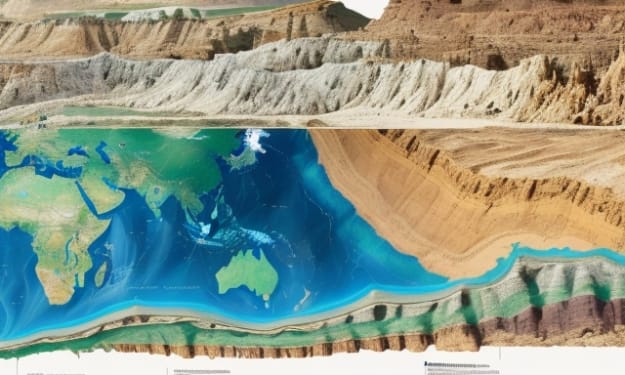Exploring the Dark Giants of the Deep Sea: Unveiling the Mysteries of the Abyss
Unveiling the Giants of the Abyss: The Mysteries of Deep-Sea Gigantism

The deep sea, a vast, dark, and nearly freezing cold realm, is a place of wonders and terrors, where giants lurk in the shadows. As we descend through the ocean depths, we encounter various zones, each with its unique characteristics and inhabitants. The journey begins with the epipelagic zone, bathed in the sun's energy, where colorful and abundant marine life thrives. The mesopelagic zone, also known as the ocean twilight zone, lies below, where light becomes dim, and photosynthesis is impossible. Deeper still, beyond a thousand meters, we enter the midnight zone or the bathypelagic zone, shrouded in darkness, where the only light comes from bioluminescent creatures such as squids and anglerfish.
The pressure at these depths is immense, and the temperatures shockingly low. Yet, the ocean continues to plunge even further into the abyssal pelagic zone, reaching depths of up to 6,000 meters, with pressures 600 times that of our terrestrial world. Covering 300 million square kilometers, about 60 percent of the Earth's surface, the abyssal realm is considered the single largest ecosystem for life on our planet. But the depths do not stop there; the Hadal pelagic zone goes even deeper, from about 6,000 to 11,000 meters, in long, narrow trenches such as the Mariana Trench, the deepest of them all.
In this seemingly inhospitable landscape, life somehow manages to not only survive but also thrive. Numerous creatures have evolved to be exceedingly freaky, with examples like the giant Japanese spider crab, the big red jellyfish, the king of herring, oarfish, the giant squid, the Greenland shark, and the giant isopods. These deep-sea giants represent a phenomenon known as deep-sea gigantism, where creatures in the depths tend to be substantially larger than their shallow-water counterparts.
The scarcity of food below 400 meters poses a significant challenge for deep-sea animals. With sunlight fading away, photosynthetic algae and plankton become scarce, and marine snow becomes the backbone of life in the deep. Marine snow consists of dead plankton, fecal pellets, and decaying matter that rains down from shallower waters. Some animals, like the vampire squid, have evolved specialized adaptations to catch and eat marine snow directly. However, most deep-sea creatures rely on eating those that consume marine snow, leading to an intricate and strained food web.
As food becomes scarce, predation pressure becomes extremely high. Being a prey animal in the deep sea is risky, as any smaller fish, crustacean, or cephalopod has a big target on its back. In response, some animals have evolved to transition from being prey to becoming top predators. The giant squid, a mysterious and iconic creature of the deep, is an example of this transformation. With an impressive size of up to 13 meters and weighing around 275 kilograms, the giant squid is one of the few extant megafauna never to have been photographed alive until the early 21st century.
The colossal squid, a close relative of the giant squid, takes deep-sea gigantism to the extreme. It is the largest invertebrate in the world, shorter than the giant squid but heavier, weighing between 500 and 700 kilograms. Contrary to popular belief, these deep-sea giants aren't dominating predators, but rather slow and opportunistic feeders. They have evolved a slow metabolism, making them incredibly efficient in their energy use, a characteristic shared by other deep-sea giants such as the Greenland shark.
The deep, cold waters of the hadal zone exert significant pressures that drive gigantism in deep-sea creatures. Birdman's rule, which suggests that animals in cold environments tend to be larger, applies not only to warm-blooded endotherms but also to some ectotherms like deep-sea squids, crabs, and isopods. The greenland shark, one of the strangest giants of the deep, thrives in the arctic waters, where temperatures range from negative two to seven degrees Celsius. Growing up to seven meters long and weighing as much as 1,400 kilograms, these sharks have been known to live for hundreds of years, making them the longest-living vertebrates on Earth.
The deep sea, with its incredible giants, remains a delicate and interconnected ecosystem. Overfishing, plastic pollution, ocean acidification due to climate change, and deep-sea mining pose significant threats to the survival of these magnificent creatures. As we continue to explore the deep sea, we must recognize its significance and fragility, for it is not a separate world but an integral part of our planet's intricate web of life.
In our pursuit of finding alien life on other planets, we must not forget the alien-like creatures that inhabit our very own ocean depths. Preserving the wonder and mystery of the deep sea is not only essential for these fascinating creatures but also for our understanding of life on Earth and our own future. Let us treasure this uncharted realm, for it holds secrets that may have profound implications for our world and its survival. The giants of the deep are more than just enigmas; they are a testament to the resilience and diversity of life in the most extreme and extraordinary of environments.
About the Creator
Enjoyed the story? Support the Creator.
Subscribe for free to receive all their stories in your feed. You could also pledge your support or give them a one-off tip, letting them know you appreciate their work.





Comments
There are no comments for this story
Be the first to respond and start the conversation.